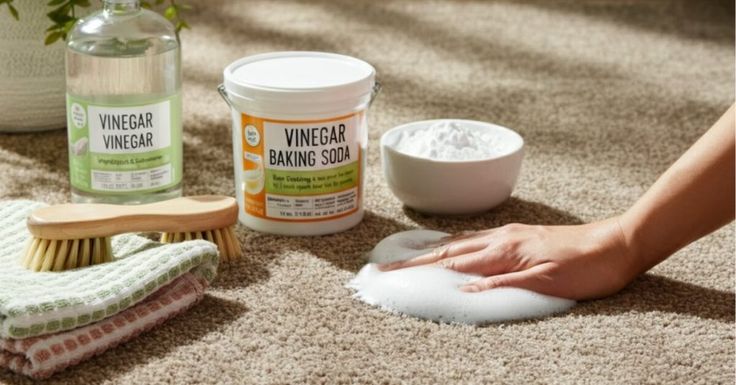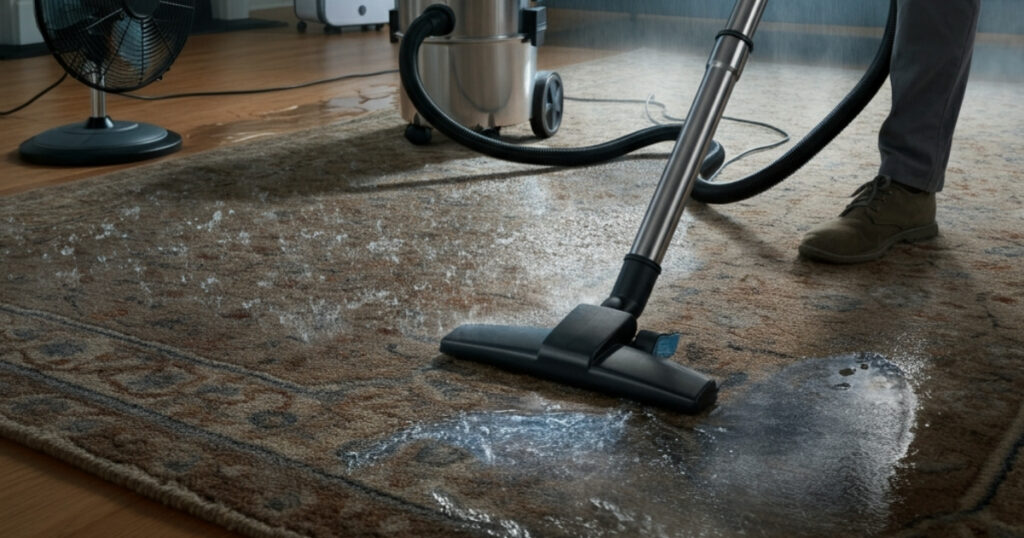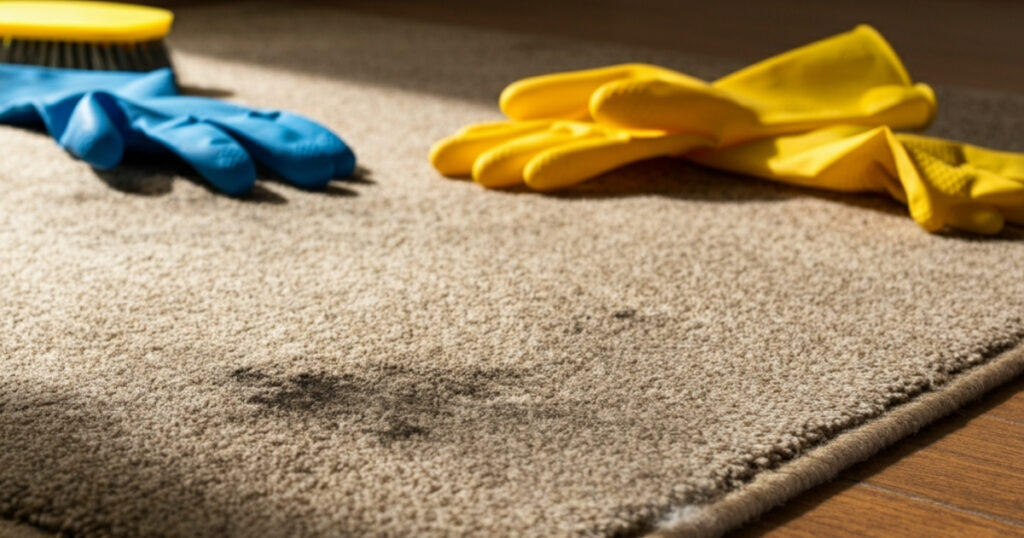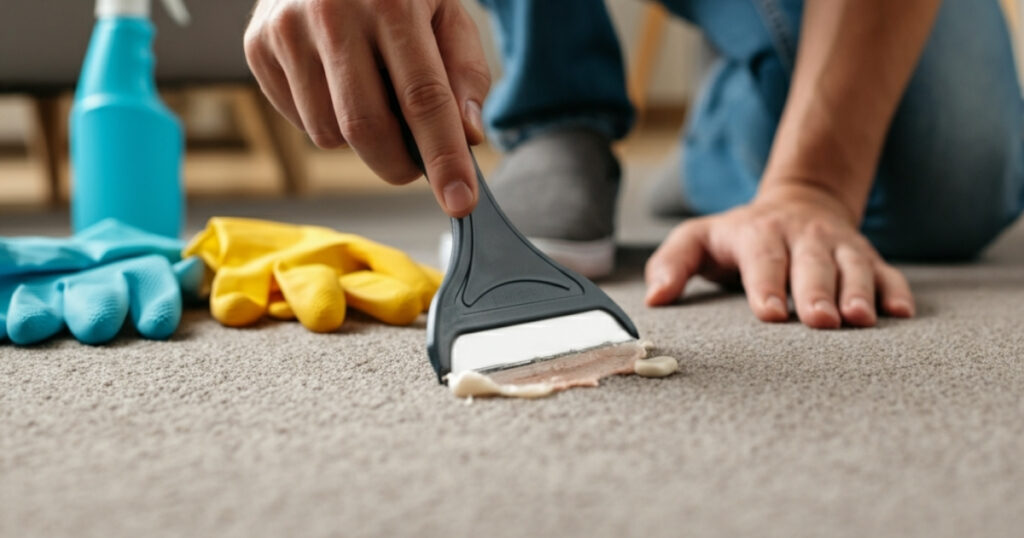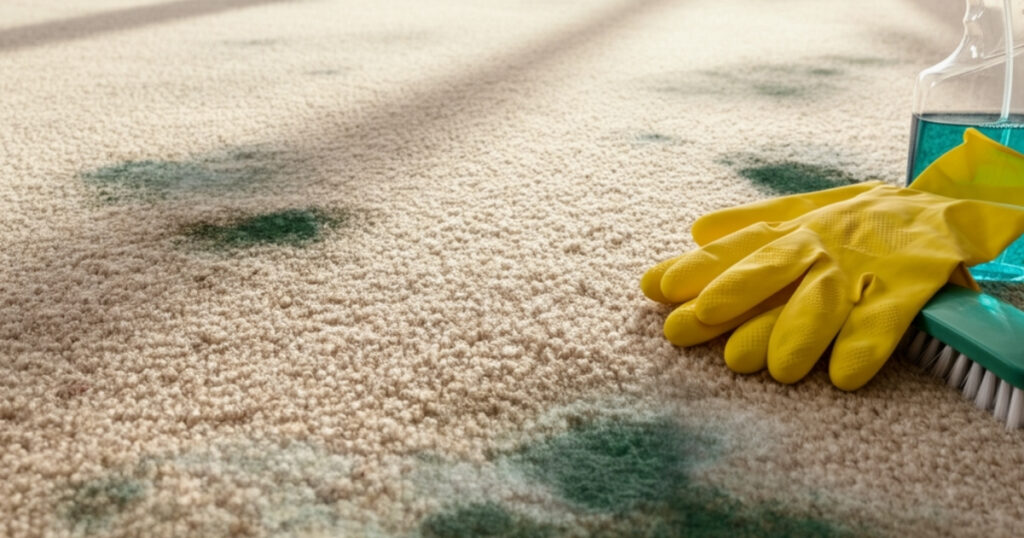As an Amazon Associate, I earn from qualifying purchases.
Cleaning carpets doesn’t require expensive chemicals or professional services. In fact, two simple household ingredients can tackle most carpet stains and odors effectively. Learning how to clean a carpet with vinegar and baking soda offers an affordable, eco-friendly solution that works surprisingly well for various carpet cleaning challenges.
This natural cleaning method combines the deodorizing power of baking soda with vinegar’s ability to break down stains and neutralize odors. Together, these ingredients create a powerful cleaning reaction that lifts dirt, removes stains, and freshens your carpets without harsh chemicals.
Whether you’re dealing with pet odors, food spills, or general carpet maintenance, this guide will walk you through everything you need to know. You’ll learn the science behind why this combination works, step-by-step cleaning instructions, and expert tips to get professional-quality results at home.
Contents Overview
Why Vinegar and Baking Soda Work So Well Together
The effectiveness of this carpet cleaning method lies in basic chemistry. Baking soda is alkaline, while vinegar is acidic. When combined, they create a fizzing reaction that helps break down dirt and grime trapped in carpet fibers.
Baking soda naturally absorbs odors and moisture, making it perfect for tackling smells that seem impossible to eliminate. Meanwhile, white vinegar dissolves mineral deposits, breaks down protein-based stains, and kills bacteria and mold that can cause persistent odors.
This combination also works as a natural fabric softener, leaving your carpet feeling fresher and softer than many commercial cleaners. Plus, both ingredients are safe around children and pets when used properly.
Essential Supplies You’ll Need
Before starting your carpet cleaning project, gather these basic supplies:
- White vinegar (never use colored vinegar)
- Baking soda
- Warm water
- Spray bottle
- Vacuum cleaner
- Clean towels or rags
- Soft-bristled brush or old toothbrush
- Bowl for mixing
Having everything ready beforehand ensures a smooth cleaning process and better results.
Step-by-Step Guide to Clean Carpet with Vinegar and Baking Soda
Method 1: General Carpet Cleaning
Start by vacuuming the carpet thoroughly to remove loose dirt and debris. This step prevents you from grinding dirt deeper into the fibers during cleaning.
Next, sprinkle baking soda generously over the carpet area you want to clean. Use about one cup of baking soda for every 10 square feet of carpet. Let the baking soda sit for at least 30 minutes, though overnight is even better for stubborn odors.
Create your vinegar solution by mixing one cup of white vinegar with one cup of warm water in a spray bottle. Shake well to combine the ingredients thoroughly.
After the baking soda has had time to work, spray the vinegar solution over the baking soda. You’ll see it fizz and bubble, which means the cleaning reaction is working. Don’t worry about the temporary vinegar smell – it will disappear as the carpet dries.
Allow the mixture to work for 10-15 minutes, then blot the area with clean towels. Avoid rubbing, as this can damage carpet fibers. Instead, press down firmly and lift straight up to absorb the moisture.
Finally, vacuum the area once it’s completely dry to remove any remaining residue.
Method 2: Spot Cleaning Stains
For specific stains, start by blotting up as much of the spill as possible with clean towels. Never rub the stain, as this pushes it deeper into the carpet.
Make a paste using three parts baking soda to one part water. Apply this paste directly to the stain and let it sit for 30 minutes.
Mix equal parts white vinegar and warm water in a spray bottle. Spray this solution over the baking soda paste and watch it foam up.
Use a soft brush to gently work the mixture into the stain, moving from the outside edges toward the center. This prevents the stain from spreading.
Blot the area with clean towels to absorb the cleaning solution and loosened dirt. Repeat if necessary for stubborn stains.
Once clean, rinse the area with plain water and blot dry. Vacuum after the carpet is completely dry.
Tackling Different Types of Stains
Pet Urine and Odors
Pet accidents require special attention because urine can penetrate deep into carpet padding. Start by blotting up as much liquid as possible.
Apply a thick layer of baking soda over the affected area and let it sit for several hours or overnight. The baking soda will absorb moisture and neutralize odors.
Mix one cup of white vinegar with two cups of warm water. Spray this solution over the baking soda and let the reaction work for 15-20 minutes.
Blot thoroughly with clean towels, then rinse with plain water and blot again. You may need to repeat this process for older or set-in odors.
Food and Beverage Spills
Coffee, wine, and food spills respond well to immediate treatment. Blot up the spill first, then apply baking soda to absorb remaining moisture.
Create a stronger vinegar solution using two parts vinegar to one part water for tougher stains. Spray over the baking soda and let it work for 10 minutes.
Gently scrub with a soft brush if needed, then blot and rinse thoroughly.
Grease and Oil Stains
Grease stains need extra attention because oil repels water-based cleaners. Start by sprinkling cornstarch or additional baking soda on fresh grease to absorb the oil.
Let this sit for 30 minutes, then vacuum up the powder. Apply your baking soda and vinegar treatment as described above.
For stubborn grease stains, you may need to repeat the process or add a small amount of dish soap to your vinegar solution.
Professional Tips for Best Results
Always test your cleaning solution in an inconspicuous area first to ensure it won’t damage or discolor your carpet. Different carpet materials can react differently to cleaning solutions.
Work in small sections rather than trying to clean your entire carpet at once. This gives you better control and ensures more thorough cleaning.
Use distilled water if your tap water is hard, as minerals can leave residue on your carpet. Similarly, always use white vinegar rather than other types, which can stain.
Ensure proper ventilation while cleaning to help the carpet dry faster and prevent mold growth. Open windows or use fans to circulate air.
Never oversaturate your carpet, as this can damage the padding underneath and lead to mold problems. Use spray bottles to control the amount of liquid applied.
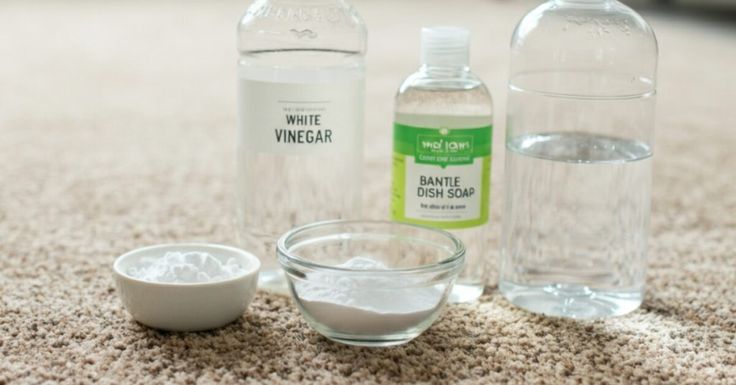
When to Avoid This Method
While vinegar and baking soda work well on most carpets, some situations require different approaches. Natural fiber carpets like wool can be damaged by vinegar’s acidity, so test carefully or consult a professional.
Very old or delicate carpets may need gentler treatment. Similarly, if your carpet is still under warranty, check whether home cleaning might void the coverage.
For large areas of severe staining or damage, professional cleaning might be more effective and cost-efficient than repeated home treatments.
Maintaining Your Carpet After Cleaning
Regular maintenance keeps your carpet looking fresh longer. Vacuum at least twice a week, and treat spills immediately to prevent stains from setting.
Consider applying this baking soda and vinegar treatment monthly as preventive maintenance, especially in high-traffic areas or homes with pets.
Place mats at entrances to reduce the amount of dirt tracked onto carpets, and consider professional deep cleaning once or twice a year for best results.
Frequently Asked Questions
Can I use apple cider vinegar instead of white vinegar for carpet cleaning?
No, stick with white vinegar. Apple cider vinegar can leave stains and has a stronger smell that lingers longer.
How long should I let baking soda sit on my carpet?
Yes, at least 30 minutes for general cleaning, but overnight is better for odor removal. The longer it sits, the more odors it can absorb.
Will the vinegar smell stay in my carpet?
No, the vinegar smell disappears completely once the carpet dries. If any smell remains, it usually indicates the carpet isn’t fully dry yet.
Can I use this method on all carpet types?
No, test first on natural fiber carpets like wool or silk, as vinegar can damage these materials. Synthetic carpets generally handle this treatment well.
How often can I clean my carpet with vinegar and baking soda?
Yes, you can use this method monthly for maintenance cleaning without damaging most carpets.
What if the stain comes back after cleaning?
Yes, this often means the stain has penetrated into the carpet padding. You may need to repeat the treatment or consider professional cleaning.
Transform Your Carpet Cleaning Routine
Cleaning your carpet with vinegar and baking soda offers an effective, affordable alternative to expensive commercial cleaners. This natural method tackles odors, stains, and general dirt while being safe for your family and pets.
Remember to always vacuum first, test in hidden areas, and work systematically for best results. With regular maintenance using this simple technique, your carpets will stay fresh and clean without breaking your budget or exposing your home to harsh chemicals.
Start with a small area to perfect your technique, then expand to larger sections as you gain confidence. Your carpets will thank you for the gentle yet effective treatment.
As an Amazon Associate, I earn from qualifying purchases.

